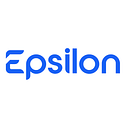Three key operational excellence drivers for software product success
By Madhavan Krishnan — Senior Vice President, SaaS Operations and Engineering at Epsilon India.
Software products, offered as Software as a Service (SaaS) subscription model, are attracting significant investor and market interest as it provides clients one of the quickest paths to realize business value. While most of the focus remains on the core product functionality, features, and useability — and quite justifiably so — it is undeniable that the ultimate business success of a product hinges on the customers’ experience with the product and the quantifiable customer value realized.
The science and engineering of SaaS operational excellence is a result of a relentless focus on defining, executing, measuring, and improving upon the standard operating procedures in response to incidents and client requests. This, along with constant innovation focused on improvising customer experience. Operational excellence as a strategic differentiator is not as often spoken about but it remains a crucial part of value unlocking.
In this article, we examine a few key capabilities that product operations function needs to develop to help companies differentiate their products through both functional (feature) and operational innovations.
1. Evolve DevOps culture to a systems reliability focused Site Reliability Engineering (SRE) mindset
DevOps and SRE are best visualized as an integrated set of practices in the continuous value chain of reliably launching and running product features that meets an ever-evolving client need. Simply put, DevOps practices focusses on enabling fast, efficient, and continuous development and deployment of software product features. SRE brings in the user centric view of how these product features are experienced, with a singular focus on system’s reliability impact on that experience. This requires a cultural shift to view system reliability not just as an operations problem but as a key responsibility where all teams including engineering, products, and operations have a stake.
SRE is both a practice and skillset (role) that organizations need to invest to build up capacity. This practice will help reorient both engineering and operations functions into an integrated whole, governed by metrics that impact the end-user. This perspective is critically important to break down organization silos, foster collaboration and define the true ‘North Star’ of success of a software product. SRE as a function infused and housed in operations will have a culturally transformational effect on the way customer experience is perceived and impacted by all functions that contribute to achieving that outcome.
2. Develop hyper-automation capabilities and deploy at scale for constant operational improvements
Hyper automation is a discipline of systematically infusing automation into IT and Business operations across all activities and processes of software products. Outcome of such automation initiatives often leads to reimagination of operational processes resulting in new ways of working. Hyper automation initiatives that heavily leverages operational data to derive operational insights for preventive and predictive maintenance leads to a discipline of Machine Learning Operations (MLOps), a process of building, testing, and maintaining ML models as an operations discipline which can lead to impactful outcomes for both the business and clients.
Hyper automation is almost a holy grail of modern operations with quantum benefits impacting operational efficiencies, reduced toil, improved employee morale and an impact on improved customer experience.
Deploying automation at scale requires organizations to reorient their approach to operations from a cost function to a value generating function. Operations automation is a key driver for expanding people capabilities, overcoming operational technical debt and creating continuous operating leverage, which can plough back efficiencies quarter after quarter. The discipline of building, growing, and executing automation pipeline with the same rigor as product feature backlog will deliver operational savings on an ongoing basis.
3. Align operational success metrics with key client success metrics
Organization silos sometimes suffer from a lack of visibility and a line-of-sight between the work operational teams perform and its impact on client experience. A DevOps culture certainly helps address the issue in some ways, but metrics tracked here are still somewhat technical. There is a need for a more direct alignment of business with operations, with both speaking the same language. This calls for technical leaders to build deeper domain expertise and speak the lingo of business that impacts client outcomes. The impact that this can have on client experience can be significant, with an organizational capability to translate key client impacting operational improvement initiatives to business benefits relatable to clients. This will build a virtuous cycle of aligning all organizational efforts to deliver superior client experience.
Developing a customer centric approach to operational excellence can have a transformational impact on an organization’s culture and the morale of teams. It will add a renewed sense of purpose with a streamlined alignment of organizational goals with day-to-day tasks when the positive outcome of these initiatives can be linked to acknowledgment of progress, reward, and recognition. In turn, this will lead to superior customer satisfaction and ultimately product success.
Originally published inHackerNoon: https://hackernoon.com/software-product-success-3-key-operational-excellence-drivers

